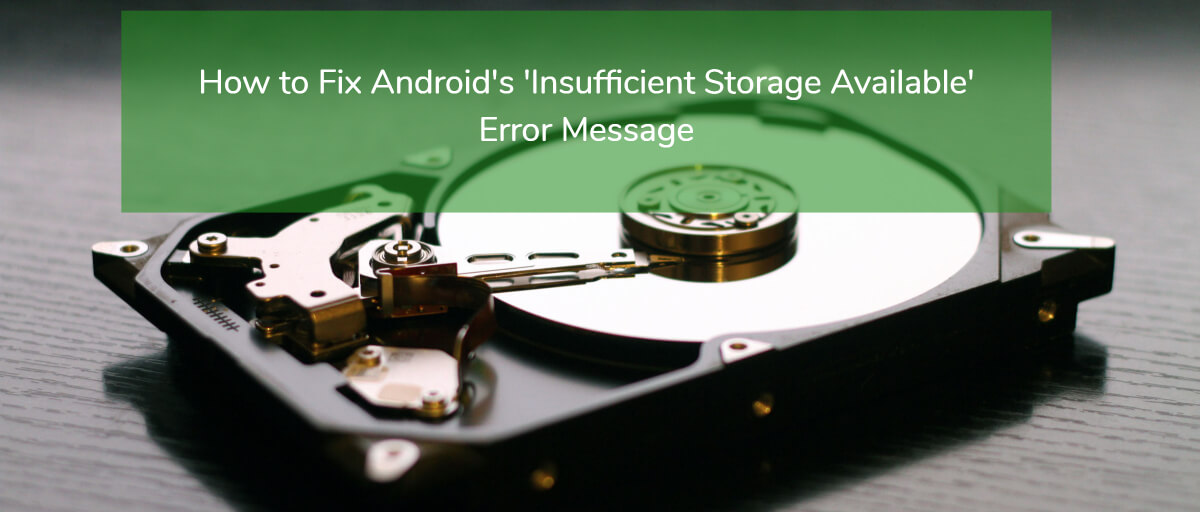Last Updated on March 29, 2020
This is one of the most annoying error messages in the history of tech. It’s caused variously by all the device’s storage being used up (e.g. only 100mb remaining) or a bug in the Android OS software. It can also be caused if you transfer a lot of data that doesn’t get deleted once it has transferred (i.e. it is still in your cache – more on that later).
There are many solutions circulating the net. Here we will present the best options – if one of them doesn’t work, you need help from a higher power…
1. Go to Settings > Apps and clear the cache.
2. Delete apps, videos, photos, music you don’t need or use anymore.
If the next steps don’t work, you might need to download an app (yes, I appreciate the irony of having to download an app to solve the problem of not being able to download apps). Deleting some old apps or apps you can re-install later might give you enough space to pursue other solutions.
3. The bug might be in the Google Play Store. (Basically, your tablet tries to install the latest versions of some apps, so deleting those apps doesn’t help as your device will immediately try to re-install it.) Go to Settings > App Manager > Google Play Store and click “Uninstall Updates“. When you go to the Play Store the settings will reset to default so quickly stop it from updating apps that you do not want updated. Hopefully, then you will be able to download and use apps problem-free.
4. If you have used Link2SD to change the default app install location to External, be aware that some devices don’t support this and it is probably the cause of your error message. Change the setting back to Automatic and that should do the trick.
5. The problem is you can’t download apps. Many websites will give you the advice to… download an app to solve the problem! We describe that app in step 8, but it makes more sense to tell you how to move apps to your tablet even if it claims to be full. This trick might be enough for some people, especially if your tablet does have lots of space free.
There is a way to move apps onto your device from a desktop, though it’s a little technical. You can download the .apk file (the file containing the app you want to download to your tablet) on a PC, then transfer it across using a USB cable.
Then you can run the app as though you’d downloaded it on the phone.
6. This is a trick that works on some phones, but you might be able to get it to work on a tablet with some messing about. (After writing the first draft of this guide I found it’s limited to Samsung phones.) It’s called the *#9900# dump trick and basically means dialing the code *#9900# as though it was a phone number. If you’re lucky, it will reset the cache and free up your device’s memory. (Select ‘delete dumpstate’ from the screen in the next image.)
7. Using whatever method possible, use Android Assistant or any other cache-cleaning app and run it to wipe the app cache.
8. If all else fails, there’s a 2MB app that works for many people – App Cache Cleaner – 1Tap Clean. Of course, you might be tearing your hair out because you literally can’t download anything. But if you delete some old photos or some old Whatsapp chats and your tablet miraculously let you install this app, it will clean your App Cache and hopefully solve the problem.
9. It’s possible to do everything the 1Tap Clean app does by hand – it just takes longer.
To start with, have a look at if your tablet will let you clear the cache without manually clearing them individually. On some Samsung tablets, for example, you can open the Settings menu, go to Storage, then tap on ‘Cached Data’ and hit delete when shown the message:
‘Clear cached data. This will clear cached data for all apps’
But most people won’t want to wipe all data from all apps. So that means going through them one at a time. Go to your list of installed apps and delete the cache from each one – start with Facebook, Chrome, and Google Maps as they often hoard memory.
If you have disabled automatic updates, then now is a good time to free up space from the apps that came pre-installed on your tablet. If you haven’t disabled updates, this step is pointless since they will just re-install right away.
Did you find a different solution? Please let us know so we can make this list as useful as possible!

